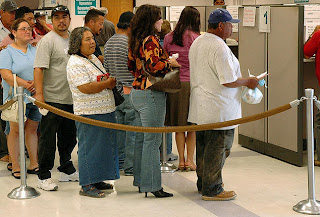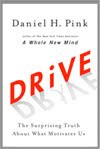I could tell who she was at a glance: a former journalist, now unemployed. One question confirmed it—“where did you work?” InStyle, she said, referring to the Time Inc. fashion-and-celebrity magazine. Time has had waves of layoffs like so many other media companies. And it turned out, the room was full of similar people, from InStyle, Gourmet, and, of course, BusinessWeek.
Site: the unemployment office. The New York State Department of Labor had summoned me there, via a threatening, computer-generated note. I anticipated a grilling, connected to some failure on my part, real or bureaucrat-invented. Turns out, everyone receiving unemployment benefits has to report for an “orientation session.” Happily, the Kafkaesque elements of the meeting were kept to a minimum, and department representatives even offered a bit of self-deprecating humor about how long a telephone caller might have to wait before speaking to a live person.
I thought again about this experience as I examined a posting on the New York Times site–a fascinating, action chart called “The Jobless Rate for People Like You”
As you click on variables such as race, gender, age, and education level, the graf line jumps – very notably, for example, for black men under the age of 25 who lack a high-school diploma, for whom the rate is nearly 50%. My group—white, male college grads over the age of 45—have a relatively low rate of unemployment, namely under 10%.
I don’t doubt that the last figure is at least somewhat accurate. Nevertheless, the “restructuring” going on in the field of journalism is having profound consequences for former scribblers, many of whom are casting about in other fields of work. I’ll be keeping you posted regarding my own job search and the adventures I encounter on the way.
Meanwhile, the Rutgers alumni magazine (Winter, 2010) carries a sobering piece, based on a survey conducted by that university’s John J. Heldich Center for Workforce Development. Among the recently unemployed, the survey shows, 84% received no severance package, 60% received no warning that they were about to lose their jobs, and 53% have received no unemployment benefits. Those who have gotten such bennies must count themselves lucky.


